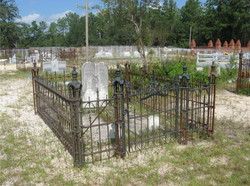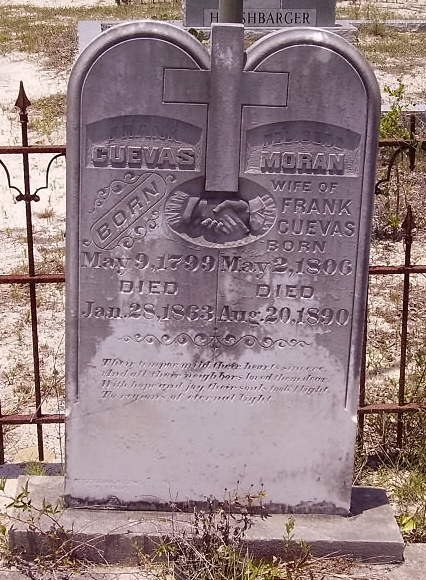Three rivers feed this area: The Pearl, The Wolf, and The Jordan. Local legends say that the local Native Americans did thier "butchering" here and threw the waste into the bayou, which they called "Bena-shiva" which roughly translates to "Rotten Bayou". Francois "FranK" Cuevas acquired forty acres of this land from the United States Government (listed as patent # 5178) on January 5, 1841. He was the second son of Juan Cuevas who settled Cat Island located along the Coast in the Gulf of Mexico. Francois was buried here in 1863. His wife, Felicite Moran was buried beside him in 1890. On August 7, 1893, the eleven surviving children of Francois and Felicite deeded the forty acres to Hancock County as a public cemetery for the area's residents. All procedes collected from the harvesting of hardwood timber was to be donated to the Catholic Church located at Rotten Bayou, known as Saint Joseph. The Hancock County Board of Supervisors since that time, have been responsible for the upkeep of the Cemetery. At the final resting place of Francois and Felicite, stands a flagpole donated decades later by the VFW Auxiliary of Diamondhead in honor of the Cuevas Family's gift to the citizens of Hancock County. Keeping with age-old tradition and old world custom, All Saints Day, November first, at the Cemetery is celebrated with the coming together of family from along the Mississippi Gulf Coast to reunite, place flowers, and practice in the celebration of Mass with candle lit services in the evening.
|  Francois and Felicite's final resting place.  Reunited once more. |